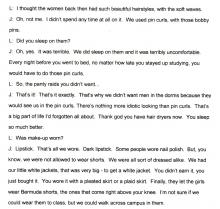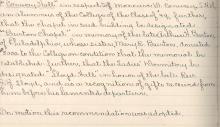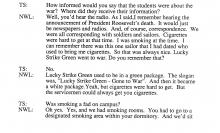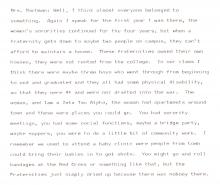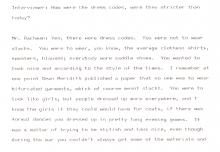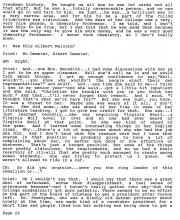Pin Curls and the Danger of Panty Raids
Jane Myers Sellers (Class of 1955) describes in an interview how women achieved the effect of soft waves, a hairstyle popular during the 1950s. She reports that female students used pin curls with bobby pins and slept on them every night. Sellers explains that it was "terribly uncomfortable" and that "before you went to bed, no matter how late you stayed up studying, you would have to do those pin curls." According to Sellers, female students did not want the men in the dormitories during panty raids because they did not want the men to see them in pin curls.

